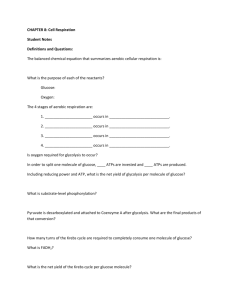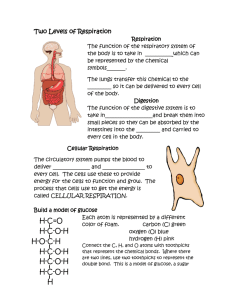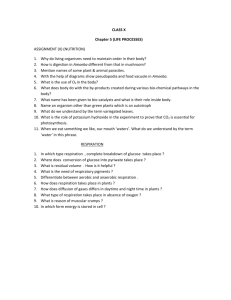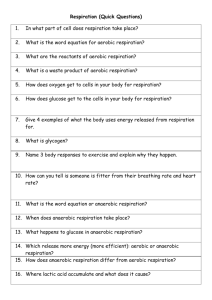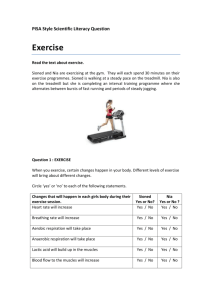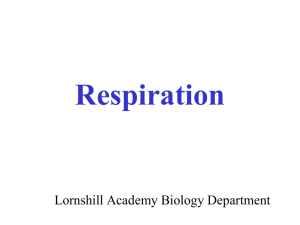Vocabulary: Cell Energy Cycle
advertisement
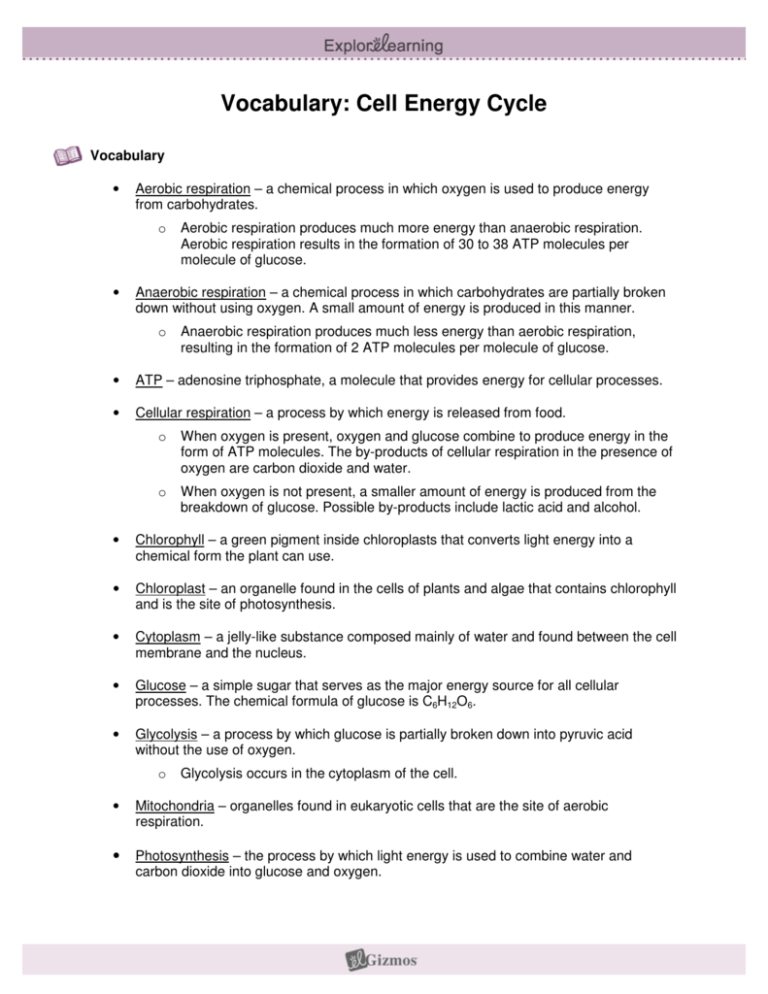
Vocabulary: Cell Energy Cycle Vocabulary • Aerobic respiration – a chemical process in which oxygen is used to produce energy from carbohydrates. o • Aerobic respiration produces much more energy than anaerobic respiration. Aerobic respiration results in the formation of 30 to 38 ATP molecules per molecule of glucose. Anaerobic respiration – a chemical process in which carbohydrates are partially broken down without using oxygen. A small amount of energy is produced in this manner. o Anaerobic respiration produces much less energy than aerobic respiration, resulting in the formation of 2 ATP molecules per molecule of glucose. • ATP – adenosine triphosphate, a molecule that provides energy for cellular processes. • Cellular respiration – a process by which energy is released from food. o When oxygen is present, oxygen and glucose combine to produce energy in the form of ATP molecules. The by-products of cellular respiration in the presence of oxygen are carbon dioxide and water. o When oxygen is not present, a smaller amount of energy is produced from the breakdown of glucose. Possible by-products include lactic acid and alcohol. • Chlorophyll – a green pigment inside chloroplasts that converts light energy into a chemical form the plant can use. • Chloroplast – an organelle found in the cells of plants and algae that contains chlorophyll and is the site of photosynthesis. • Cytoplasm – a jelly-like substance composed mainly of water and found between the cell membrane and the nucleus. • Glucose – a simple sugar that serves as the major energy source for all cellular processes. The chemical formula of glucose is C6H12O6. • Glycolysis – a process by which glucose is partially broken down into pyruvic acid without the use of oxygen. o Glycolysis occurs in the cytoplasm of the cell. • Mitochondria – organelles found in eukaryotic cells that are the site of aerobic respiration. • Photosynthesis – the process by which light energy is used to combine water and carbon dioxide into glucose and oxygen.


